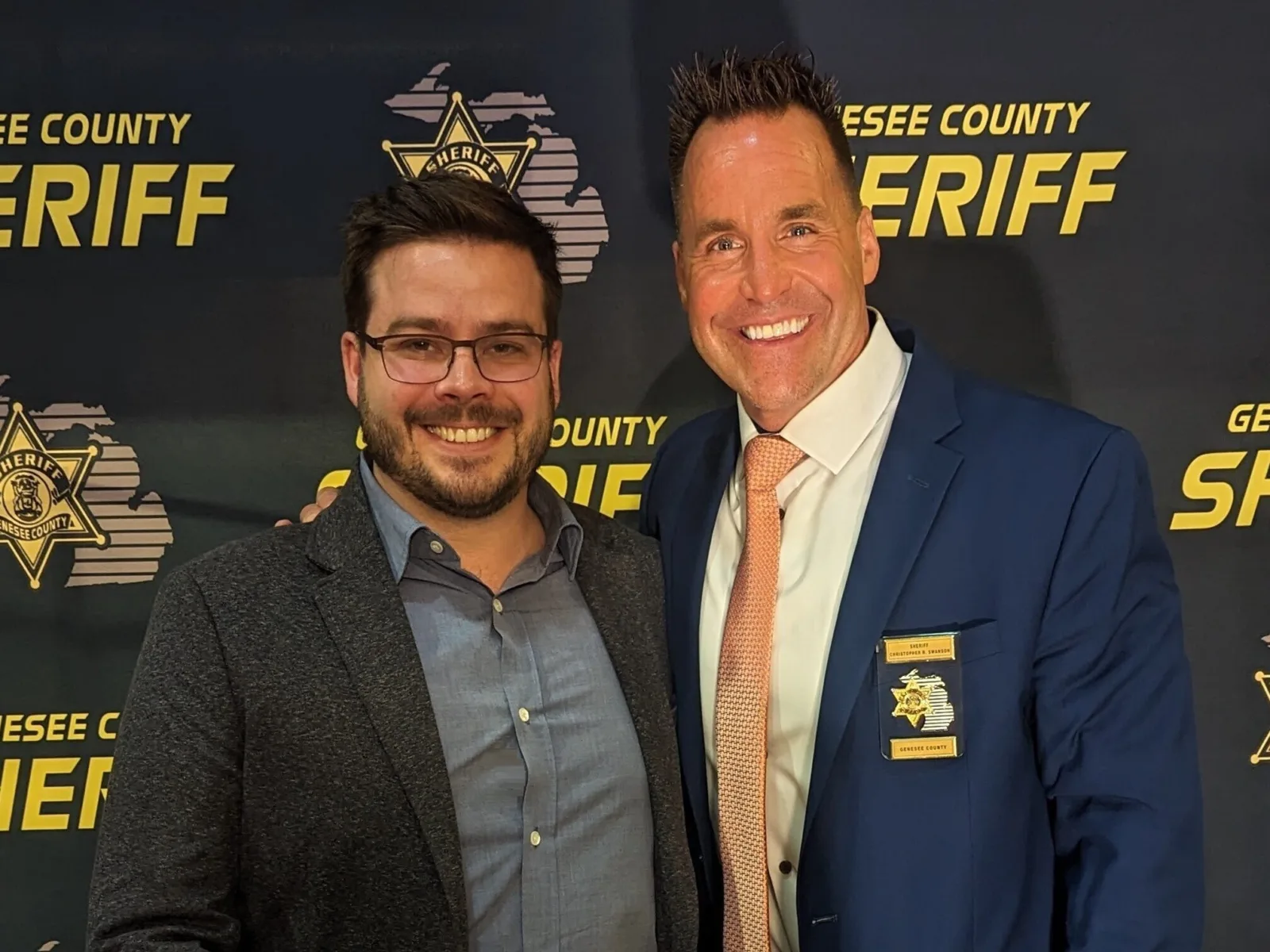After a series of mass shootings earlier this year, many wondered how to get firearms out of the hands of people who threaten violence. Extreme risk protection orders, or ERPOs, are one promising tool. The laws allow courts to temporarily suspend firearms access for people who stand a particularly high risk of committing violence, based on a request from police or the person’s family and evaluation of the evidence by a judge. The goal of ERPOs — sometimes known as “red flag laws” — is to reduce the likelihood that someone will use a gun to attempt suicide or harm someone else. Through the Bipartisan Safer Communities Act, the federal government is funding states to implement ERPOs and evaluate their effectiveness. But important questions remain about whether these laws work and what elements of their implementation researchers should examine.
April Zeoli, an associate professor in the Institute for Firearm Injury Prevention and School of Public Health at the University of Michigan who specializes in gun restriction laws, is trying to find out. Recently, Zeoli released a report on the key research questions around ERPOs, and she is leading the largest study on these laws to date, looking at their implementation in several states. We spoke with Zeoli about her new report and the questions it encourages about the effectiveness of ERPOs, equity in their use, and how they align with due process concerns.
This interview has been edited for length and clarity.

Arnold Ventures
What brought you to the issue of intimate partner violence and gun laws?

April Zeoli
It came from my interest in domestic violence prevention. When I was in college, I saw a lot of my female friends being abused by their boyfriends, and I started looking for something I could do to help prevent that. At the same time, I experienced firearm suicide deaths among my friends. Focusing on gun violence seemed like a good way to make a positive impact in the world, and I wanted to help.

Arnold Ventures
Has your research opened your eyes to new dimensions of these problems?

April Zeoli
Absolutely. As I learned more about intimate partner violence, it became apparent that gun-related domestic violence was a crisis that needed a response. I found out that the use of firearms in domestic violence is common, including nonfatal uses — threatening with a gun, coercion, intimidation — and the trauma that causes is incredible. In the field of suicide, I knew that firearms were a particularly lethal way to try to end your life. But I didn’t realize that most other methods people try are usually survivable, and the majority of people who survive a suicide attempt don’t make another. But with a gun, most suicide attempts are fatal.

Arnold Ventures
ERPOs seem like an important remedy to the problems you’re discussing. Have these laws allowed authorities to intervene and prevent violent incidents?

April Zeoli
It’s hard to prove that an incident would have occurred without an ERPO, but we do have examples. There are times when a husband threatens to kill his wife and their children, and police investigate and find out that he had etched their names onto bullets. That’s the kind of event that seems more likely to occur than not, and where police have used an ERPO to remove firearms from the home. With mass shooting threats, someone might find a notebook that has very detailed plans. There will be names of people that a potential shooter wants to kill at a school. In their reports, law enforcement will show that the person had access to the firearms they stated they were going to use.
It’s very chilling, reading through these cases. For those who are suicidal, you’re often reading about the worst day of their life. There are very few that you can read without an emotional impact. I don’t say any of this to be alarmist. It’s to highlight that ERPOs are being used to prevent major incidents.

Arnold Ventures
Tell us about the multi-state study, funded by the National Collaborative on Gun Violence Research, that will review ERPO petitions and orders in six states?

April Zeoli
Working with Shannon Frattaroli, professor at Johns Hopkins Bloomberg School of Public Health, along with a team of researchers at eight universities, I’m conducting a study of ERPO use in six states — California, Colorado, Connecticut, Florida, Maryland, and Washington. We have reviewed over 6,000 ERPO petitions and we’re seeing what risks people are talking about, the context of the risk and whether there’s substance abuse, whether there’s a suicide threat. We’re analyzing those data to see what makes it more likely that an ERPO will be granted, whether mass shooting threats are present, whether the number of active ERPOs in a county influences the number of firearm suicides. We’re doing a lot with these six states.

Arnold Ventures
And how do ERPOs relate to the Bipartisan Safer Communities Act?

April Zeoli
Currently, 19 states and the District of Columbia have ERPO laws. Recently, the federal government passed the Bipartisan Safer Communities Act, motivated in large part by the high-profile mass shootings that happened earlier in 2022. The federal government put money in this bill to fund crisis intervention activities, including ERPOs. There will also be more research around ERPOs, and possibly, though I don’t have a crystal ball, more states may be interested in passing legislation to support them.
ERPOs are a promising intervention, but they’re relatively new tools.April Zeoli associate professor in the Institute for Firearm Injury Prevention and School of Public Health at the University of Michigan

Arnold Ventures
Why is researching ERPOs so important at this moment, and how should your research agenda be used?

April Zeoli
We currently don’t have much evidence on whether they’re effective in reducing suicide risk or homicide risk. We don’t have a lot of empirical data on how they’re being used. We don’t know if they’re being used equitably across groups. We don’t actually know how they’re being implemented in many places, including whether firearm removal is happening in ways that are acceptable to communities.
It’s all important, because the way we implement ERPOs could impact whether an adverse event occurs during the removal, how the person feels about the ERPO, and whether they feel stigmatized. We need to investigate these things. We also need to investigate due process concerns. States have their own due process protections written within these laws, and we need to find out how those are working. It’s important to have research evidence supporting the use of any legislative tool.

Arnold Ventures
There are cases where ERPOs can exacerbate inequities. In California, for example, Black and brown communities are much less likely to use red flag laws because of distrust of police and the justice system. How can states address this problem in their research efforts?

April Zeoli
Firearm violence is much more common among young Black men than any other group. This huge inequity is baked into the fabric of our society through racist policies that were put in place during the last century. We need to focus on this problem, as well as the fact that many in Black and brown communities don’t want to call the police to their doors because of the threat of police violence.
Through their research, states need to find out whether Black and brown communities feel safe using ERPOs, and if not, what we can do to change that. All research projects should be done with an equity lens, especially when you’re working on firearm violence. That means involving the communities you’re researching. That’s paramount to finding out what that community thinks and needs — and designing interventions that meet those needs.

Arnold Ventures
In the research agenda, you call for using mixed methods and forming partnerships with practitioners. What kind of methods and partnerships are you recommending?

April Zeoli
Often, in firearms violence research — and frankly in a lot of other social science research, as well — we rely heavily on quantitative tools and forget about qualitative and mixed-methods approaches. But qualitative and mixed-mixed methods approaches are important because they allow us insight on our quantitative data. In this project, many of our research questions — what community perceptions of ERPOs are, why people petition for these orders — are best-suited for asking people and letting them tell you why. That’s how we capture differences in racial perceptions of ERPOs, people with mental illness feeling stigmatized, and so much else.
I also recommend partnerships with practitioners in ERPO research because practitioners are the people on the ground. As researchers, we may read the law and the literature. But that doesn’t mean we know what’s really happening. Working with practitioners can help us identify what we should be researching and what the challenges are.

Arnold Ventures
You research extremely heavy subject matter. What do you do to take care of yourself and unwind from focusing on firearms violence?

April Zeoli
It’s true that it’s emotionally challenging to do this work. One thing I do is exercise regularly, just to get out the emotion and the stress that physically resides in my body. For the more cognitive stress, when I can’t stop thinking about my research, the other thing I like to do is watch a lot of tennis.

Arnold Ventures
What was the most exciting moment for you from the U.S. Open?

April Zeoli
Same as everybody else. Serena Williams’ final U.S. Open was quite a moment. And Roger Federer’s recent retirement was also a huge moment. It’s helpful to have a totally different world, essentially, that I can escape into.

Arnold Ventures
Do you read to escape, too? Anything you could recommend to our readers?

April Zeoli
I don’t read a lot of non-academic books. I just don’t have the time. But my best friend Courtney Pollman-Turner just published her first novel, “Water’s Calling,” which is on my nightstand right now. It’s a fantasy book, and it’s excellent. The main character actively confronts and works through her own trauma, which is very helpful reading for someone who deals with emotionally traumatic events.






















